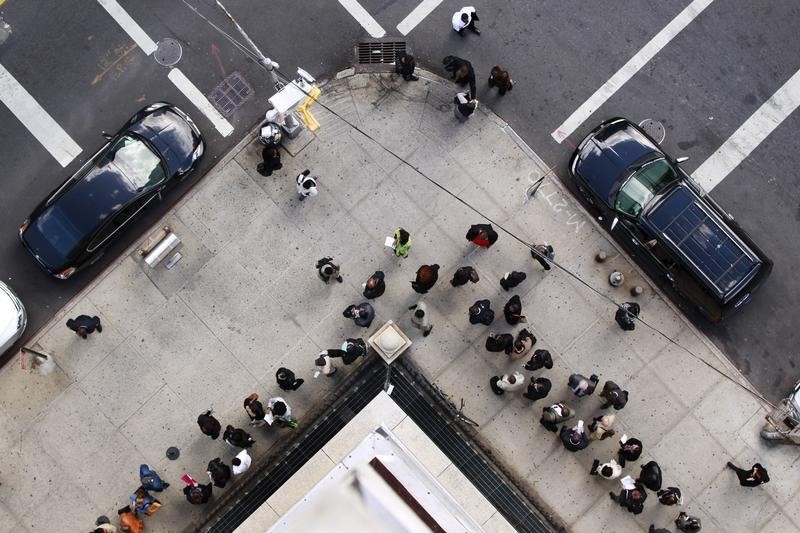

© Reuters.
Investing.com — The U.S. economy added far more jobs than expected in December, according to a new labor market report that could impact how Federal Reserve policymakers approach potential interest rate cuts this year.
increased by 216,000 last month, rising from a downwardly revised mark of 173,000 in November, figures from the Bureau of Labor Statistics showed on Friday. Economists had seen the reading at 170,000.
Employment continued to trend up in government, health care, social assistance and construction, helping offset a loss of roles in the transportation and warehousing sectors.
Along with the revision to the November numbers, October’s total nonfarm payrolls were also brought down by 45,000 to an uptick of 105,000. Combined, the changes meant that the amount of jobs added between the two months was 71,000 lower than previously reported, the BLS noted.
“Overall, another solid jobs report. But below the surface it’s not as strong as headline suggests,” said Kathy Jones, Chief Fixed Income Strategist at Charles Schwab (NYSE:), in a post on social media platform X.
The came in at 3.7%, matching the pace registered in the prior month and slightly below forecasts of 3.8%. , meanwhile, grew by 0.4% on a month-on-month basis, marginally faster than projections of 0.3% and equal to the rate posted in November.
The release will likely be closely watched by Fed officials as they weigh the possibility of slashing borrowing costs in the coming months. Signs of resilience in the labor market could influence the path ahead for inflation, the major focus of an unprecedented campaign of policy tightening by the Fed that has brought interest rates up to more than two-decade highs.
On the other hand, a solid yet softening jobs picture may aid the U.S. central bank in its bid to engineer a so-called “soft landing.” In this scenario, the Fed’s rate hikes will defeat price gains without sparking a meltdown in the broader economy.
A string of data earlier this week indicated that hiring by private employers in December topped expectations, while job openings fell to an almost three-year low.
Hopes that the Fed will start to slash rates in early 2024 fueled a market rally in the final weeks of last year, although this optimism has since begun to ebb. Despite releasing an outlook for rates that was more dovish than prior projections last month, minutes from the Fed’s latest meeting suggested that policymakers believe borrowing costs could remain elevated “for some time.”






